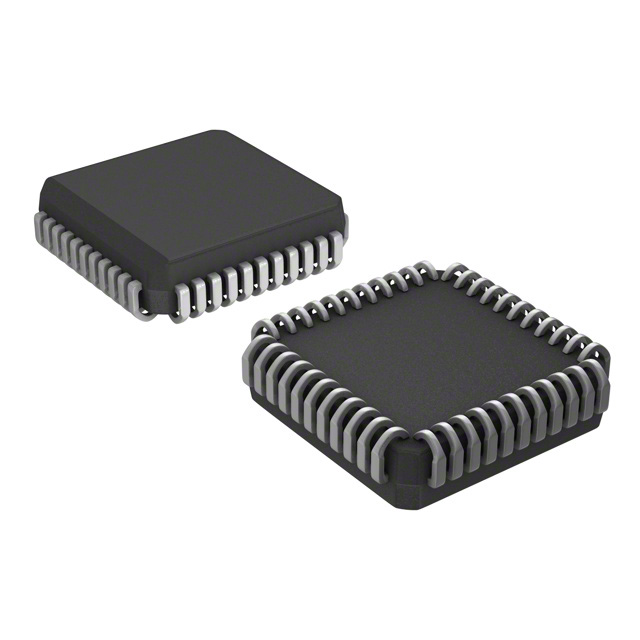Xem thông số kỹ thuật để biết chi tiết sản phẩm.

AT90S8515-4JC
Product Overview
Category
The AT90S8515-4JC belongs to the category of microcontrollers.
Use
This microcontroller is commonly used in various electronic applications that require embedded control and processing capabilities.
Characteristics
- High-performance 8-bit RISC architecture
- Low power consumption
- Wide operating voltage range
- Large program memory capacity
- Multiple communication interfaces
- On-chip peripherals for versatile functionality
Package
The AT90S8515-4JC is available in a 44-pin PLCC (Plastic Leaded Chip Carrier) package.
Essence
The essence of the AT90S8515-4JC lies in its ability to provide efficient and reliable control and processing capabilities in a compact form factor.
Packaging/Quantity
The AT90S8515-4JC is typically packaged individually and is available in varying quantities depending on the supplier.
Specifications
- Architecture: 8-bit RISC
- Operating Voltage: 2.7V - 5.5V
- Program Memory Size: 8KB
- RAM Size: 512 bytes
- Number of I/O Pins: 32
- Communication Interfaces: UART, SPI, I2C
- Timers/Counters: 3
- Analog-to-Digital Converter (ADC): 8 channels, 10-bit resolution
- Operating Temperature Range: -40°C to +85°C
Detailed Pin Configuration
The AT90S8515-4JC features a total of 44 pins, each serving a specific purpose. The detailed pin configuration can be found in the datasheet provided by the manufacturer.
Functional Features
- High-speed processing capabilities
- Flexible I/O configurations
- Built-in communication interfaces for seamless data transfer
- On-chip timers/counters for precise timing operations
- Analog-to-Digital Converter for sensor interfacing
- Interrupt handling for efficient event-driven programming
Advantages and Disadvantages
Advantages
- High-performance architecture enables fast execution of tasks
- Low power consumption extends battery life in portable applications
- Wide operating voltage range allows for compatibility with various power sources
- Ample program memory capacity accommodates complex applications
- Multiple communication interfaces provide versatility in connectivity options
Disadvantages
- Limited RAM size may restrict the complexity of data manipulation
- Lack of built-in non-volatile memory requires external storage for program persistence
- 8-bit architecture may limit the precision of certain calculations
Working Principles
The AT90S8515-4JC operates based on the principles of a RISC (Reduced Instruction Set Computer) architecture. It executes instructions stored in its program memory, manipulating data using its registers and peripherals. The microcontroller responds to external events through interrupts, allowing for real-time responsiveness.
Detailed Application Field Plans
The AT90S8515-4JC finds applications in various fields, including but not limited to: - Industrial automation - Consumer electronics - Automotive systems - Medical devices - Home appliances
In industrial automation, it can be used for controlling machinery and monitoring processes. In consumer electronics, it can serve as the brain of smart devices. In automotive systems, it can handle tasks such as engine control and driver assistance. In medical devices, it can enable precise measurements and control. In home appliances, it can provide intelligent control and energy management.
Detailed and Complete Alternative Models
- ATmega8515: A successor to the AT90S8515-4JC, offering enhanced features and performance.
- PIC16F877A: A microcontroller from Microchip with similar capabilities and popularity.
- STM32F103C8T6: An ARM-based microcontroller with advanced features and a wide range of peripherals.
These alternative models provide similar functionality and can be considered as alternatives to the AT90S8515-4JC based on specific requirements and preferences.
In conclusion, the AT90S8515-4JC is a versatile microcontroller that offers high-performance control and processing capabilities. Its compact form factor, low power consumption, and extensive feature set make it suitable for a wide range of applications in various industries.
Liệt kê 10 câu hỏi và câu trả lời thường gặp liên quan đến ứng dụng AT90S8515-4JC trong giải pháp kỹ thuật
Sure! Here are 10 common questions and answers related to the application of AT90S8515-4JC in technical solutions:
Q: What is the AT90S8515-4JC microcontroller used for? A: The AT90S8515-4JC is a microcontroller commonly used in embedded systems for various applications such as robotics, industrial control, and home automation.
Q: What is the operating voltage range of the AT90S8515-4JC? A: The AT90S8515-4JC operates within a voltage range of 2.7V to 5.5V.
Q: How much flash memory does the AT90S8515-4JC have? A: The AT90S8515-4JC has 8KB of flash memory for program storage.
Q: Can I use the AT90S8515-4JC for analog signal processing? A: Yes, the AT90S8515-4JC has an integrated 10-bit ADC (Analog-to-Digital Converter) that allows for analog signal processing.
Q: What communication interfaces are available on the AT90S8515-4JC? A: The AT90S8515-4JC supports serial communication through its USART (Universal Synchronous/Asynchronous Receiver/Transmitter) interface.
Q: Is it possible to connect external memory to the AT90S8515-4JC? A: Yes, the AT90S8515-4JC has external memory addressing capabilities, allowing you to connect additional memory if needed.
Q: Can I use the AT90S8515-4JC for real-time applications? A: Yes, the AT90S8515-4JC has a built-in real-time counter (RTC) that can be used for timekeeping and scheduling tasks.
Q: What programming language is commonly used with the AT90S8515-4JC? A: The AT90S8515-4JC is typically programmed using C or assembly language.
Q: Can I use the AT90S8515-4JC in battery-powered applications? A: Yes, the low operating voltage range of the AT90S8515-4JC makes it suitable for battery-powered applications where power efficiency is important.
Q: Are there any development tools available for programming the AT90S8515-4JC? A: Yes, Atmel provides a range of development tools, including compilers, debuggers, and programmers, specifically designed for programming and debugging the AT90S8515-4JC microcontroller.
Please note that these answers are general and may vary depending on specific application requirements and implementation details.

